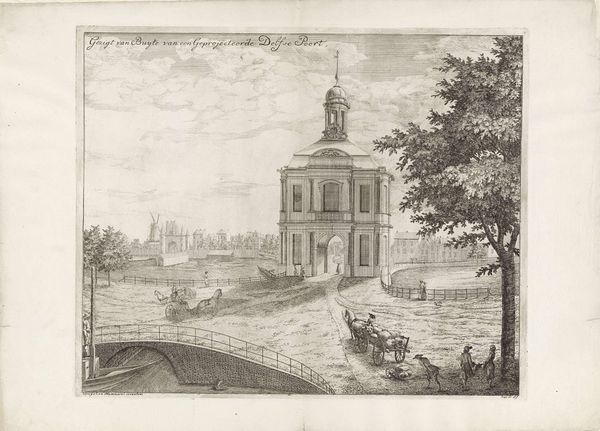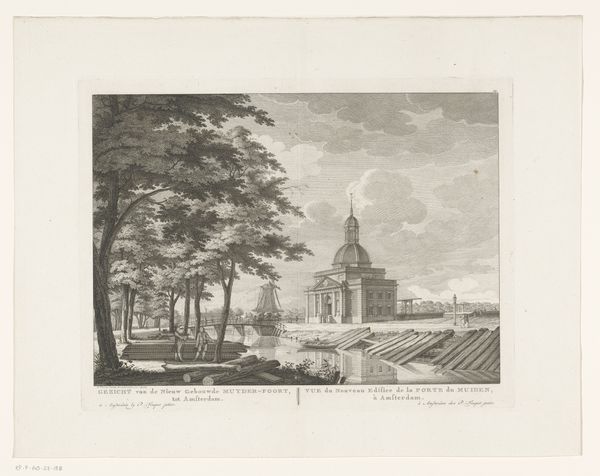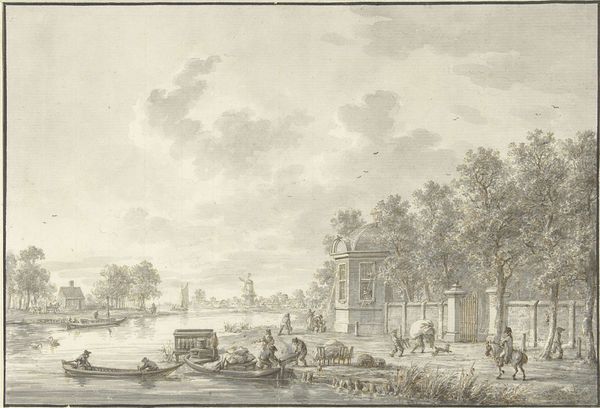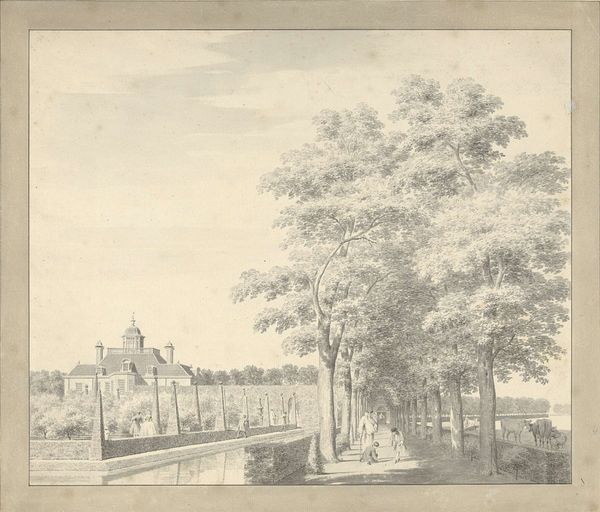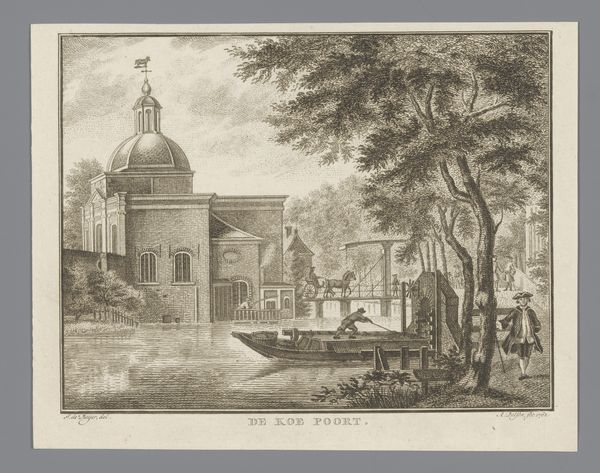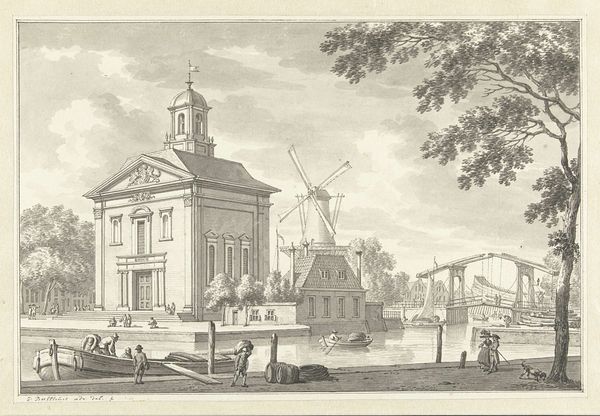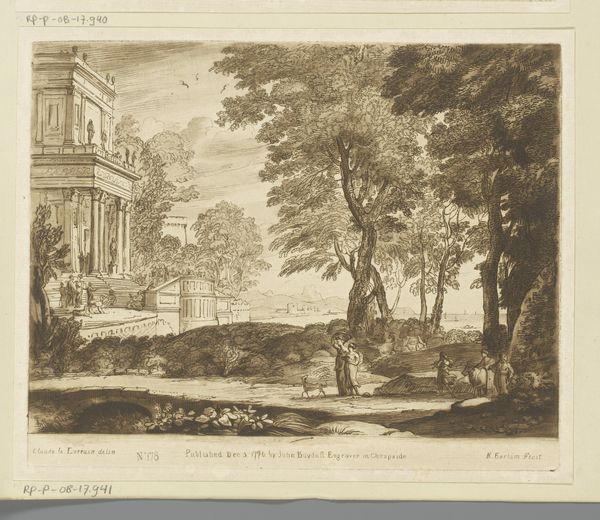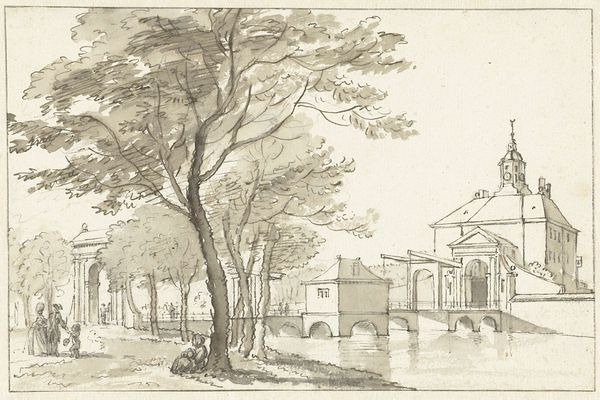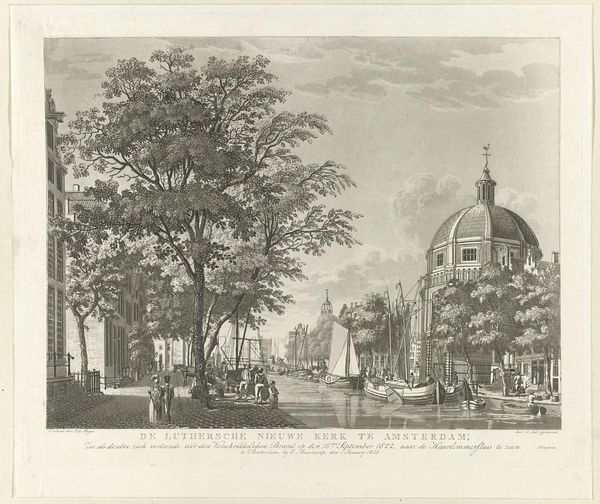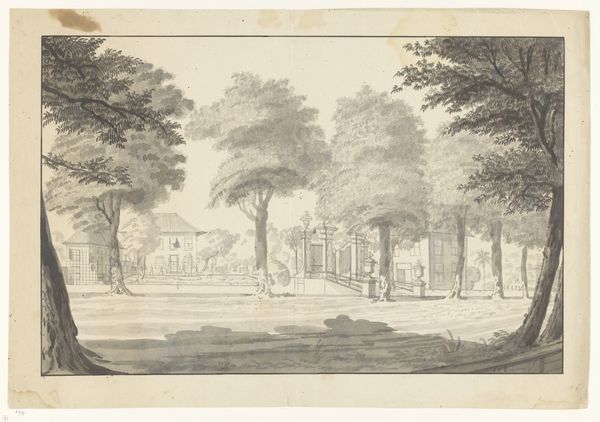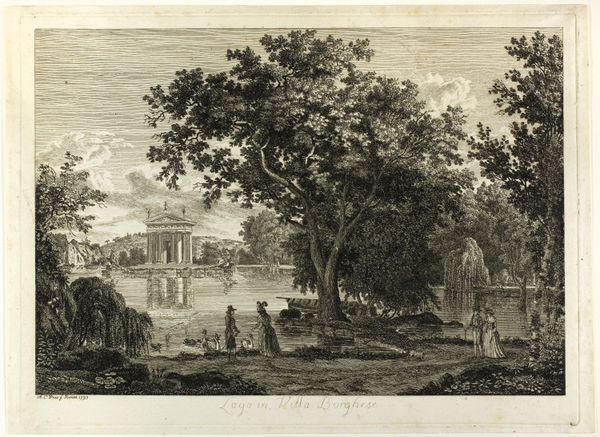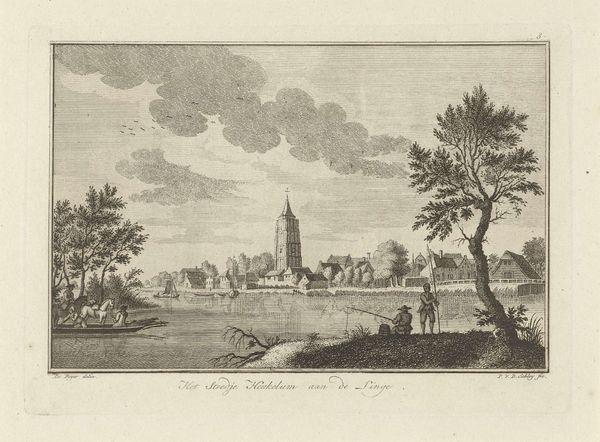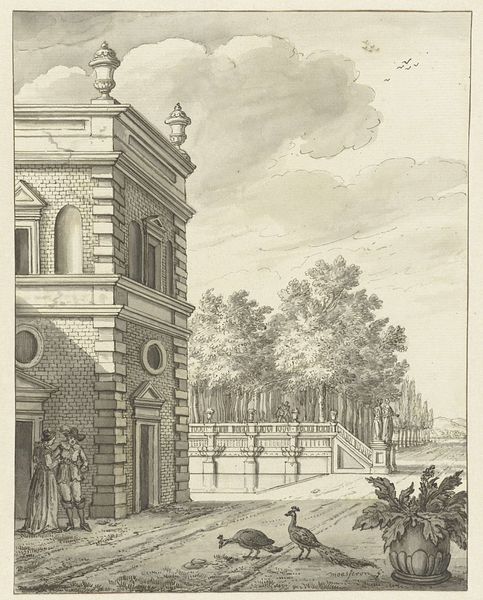
drawing, print, ink, engraving, architecture
#
drawing
#
neoclacissism
# print
#
old engraving style
#
landscape
#
ink
#
geometric
#
engraving
#
architecture
Dimensions: height 265 mm, width 318 mm
Copyright: Rijks Museum: Open Domain
Curator: This is Caspar Jacobsz. Philips' "View of the Newly Built Muiderpoort" from 1771, held here at the Rijksmuseum. It's a fascinating study in ink and engraving of this landmark. Editor: My initial reaction is a sense of serene order. The classical architecture of the gate is very striking, the symmetry of its design a strong counterpoint to the more organic landscape elements in the foreground. Curator: Indeed. The Neoclassical architecture projects civic pride and order, a visual representation of Enlightenment ideals. But note the windmill in the background – an older symbol, of the industry that enabled the building of such gates. Editor: That interplay is interesting. The image foregrounds labor quite directly: the men with their stacks of lumber, and the way those timbers literally bridge the water for the viewer, suggesting transit and connection. It suggests a deliberate ordering of natural resources toward progress. Curator: I agree. Philips is highlighting both the city's commitment to progress, with the grand Muiderpoort as a symbol of modernity, and the city’s foundational values related to industry. It's not just the architectural design; it’s about how such infrastructure bolsters identity. The Poort itself became an archetype—it was demolished only a century later, but images of it continue to circulate. Editor: What fascinates me is how Philips emphasizes the materiality. He reveals how the port is a human artifact made from materials like brick and lumber. Consider that the print itself as an object made using its own specific kind of labor: engraving. Curator: And that craft links to a visual language. Notice how the engraved lines define volume. The symbolic association with this type of ordered architectural plan represents Amsterdam’s strength. The building itself is almost diagrammatic—assertive in its rational structure. Editor: Right, there is something incredibly assertive here. The image's stark aesthetic reflects a distinct moment where industrial intervention attempts to domesticate its setting in order to project its power over nature. It’s a demonstration, isn't it? Curator: Precisely. An assertion, memorialized in ink and engraving. It becomes an image of civic identity that persists through memory and medium, both connected and supported through a common set of cultural values. Editor: Considering the means of its production certainly adds to the viewing experience, highlighting not only the artist’s hand but the larger system of resources and labor necessary for its creation. Thanks for bringing it to light.
Comments
No comments
Be the first to comment and join the conversation on the ultimate creative platform.
